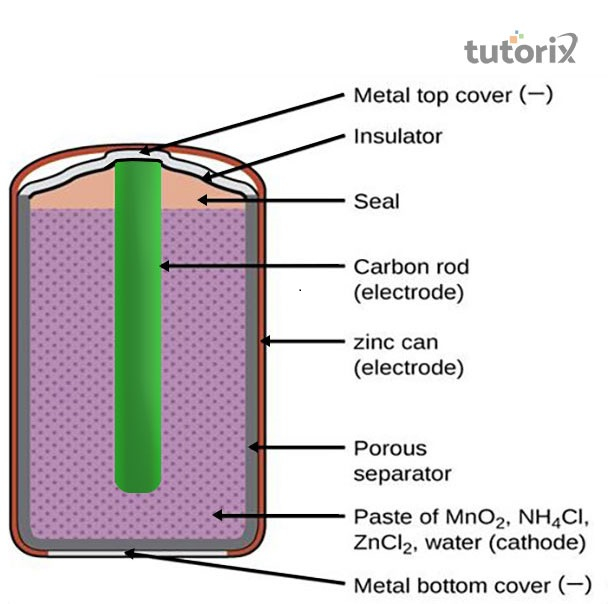

In recent times, most electronic devices have a battery that helps transform the chemical energy into the electrical energy. Primarily the battery of an electric device can be classified into two differed types primary cell or battery and secondary cell or battery. A battery refers to a collection of a single or more than one cell that goes under the different chemical reactions for creating an electric flow to other devices of the machine. Recently, different types of technologies are used in making an electric battery like breakthrough technologies.
Battery refers to a small type of essential component of the electric device that guides to operate of the working process of the other machinery particles of a device. Some batteries can be rechargeable and they are used in different sectors housing complex, making of health instruments, the medical industry, logistics as well as construction sites. Besides this, in the field of firefighting, military and even emergency cases the application of batteries is commonly seen (Tamilselvi et al. 2021). For example, for housing purposes batteries are used in a torch, inverters and most electronic devices. In the medical sector, batteries run the different pathological devices. In the military field, the battery is very useful for communicating with radio technology.
There are different types of components present in a battery such as an anode, cathode as well as electrolytes. The anode of the battery denotes the negative electrode while the cathode stands for the positive electrode. Anode produced electrons to an electronic circuit in which a battery is connected. After creating a connection an electron creation is then initiated that causes a difference between the electrodes. In different types of batteries, the arrangements of these three components of the batteries are different (Löbberding et al. 2020). Other components of the batteries are the power capacity, power capability, voltage capacity, power density, and shelf life.
Batteries are mainly classified into two different categories like Primary and secondary cells.
Primary cells have a higher density with slower dischargeable. It has also higher internal resistance with an irreversible chemical reaction.

Figure 1: Construction of the primary battery
The design of this type of battery is smaller, lighter as well as thinner that is easily portable. The cost of this cell is also lower than the secondary cells (Halimah, Rahardian & Budiman, 2019). The redox reaction of this cell at the anode is $\mathrm{Zn(s)\: \rightarrow \: Zn^{2+} (aq) + 2e^{–}}$ while at cathode the equation changed to $\mathrm{Zn(s) + 2 NH_{4}^{+ }(aq) + 2 MnO_{2} (S) \:\rightarrow\: [Zn(NH_3)_2]^{2+} (aq) + Mn_{2}O_{3} (S) + H_{2}O (l)}$

Figure 2: Construction of the secondary battery
The secondary battery consists of a lower energy density that is mainly made with wet cells as well as molten salt. It also comprises lower internal resistance, a reversible chemical reaction and the design of this type of battery is complex as well as heavier than primary cells (Thirugnanam et al. 2018). The redox reaction of this cell at the anode is $\mathrm{Pb\:\rightarrow\: Pb^{2+}+ 2 e^{–}}$ and $\mathrm{Pb+ SO_4^{2–} \:\rightarrow \:PbSO_4(electrode) + 2 e^{–}}$ while at the cathode the equation changed to $\mathrm{2 e^{–}+ PbO_{2}+ 4 H^{+}\:\rightarrow\: Pb^{2+}+ 2 H_{2}O}$ and $\mathrm{2 e^{–}+ PbO_{2}+ 4 H^{+}+ SO_4^{2-} \:\rightarrow\: PbSO_{4}(electrode) + 2 H_{2}O}$. The secondary batteries are classified into two different categories rechargeable and non-rechargeable batteries.

Figure 3: Construction of a dry cells
Rechargeable batteries have also different types like Lead-acid batteries, is a cheap battery mostly seen in cars, heavy machinery, UPS, and vehicles. The nominal voltage of these types of batteries starts from 2V to 24V and the power density is 7 Wh/Kg.
Secondary cells/battery
Lead-acid batteries
Li-ion batteries are made of Lithium and include advanced technology. The nominal voltage of these types of batteries starts from 3.7V and the power density is 126 Wh/Kg (Helbig et al. 2018).
Non-rechargeable batteries are also classified into different categories such as Alkaline batteries and Coin cell batteries. Alkaline batteries consists of the chemical construction of Zinc and Manganese dioxide. The power density of this type of battery is 100 Wh/Kg. The application of this type of battery can be seen in electric torches, different types of remotes, wall clocks and many other daily life products.
Expensive than other types of batteries and is mostly unavailable in the regional market.
Ni-Cd batteries is another type of rechargeable battery that consists of Nickel as well as Cadmium. The nominal voltage of these types of batteries starts from 1.2V and the power density is 60 Wh/Kg. These batteries are mostly used in RC toys, cordless phones as well as solar lights. It has a standard size with a higher power density.
Q1. What is the difference between the primary and secondary cells?
Ans. The primary cell comprises higher energy density and internal resistance and it is smaller and lighter. The secondary cells lower energy density and internal resistance with complex design and heavier.
Q2. What are industrial batteries?
Ans. Industrial batteries need a heavy-duty service quality like higher battery backup and power capacity. Mostly Nickel Iron and Wet Nickel Cadmium are commonly used in industry.
Q3. What is a vehicle battery?
Ans. The vehicle batteries are a lesser complicated version rather than industrial batteries. Lead-acid battery is commonly used in vehicles.
Q4. What are household batteries?
Ans. These are the most common types of batteries which are classified into two different types Rechargeable batteries and Non-rechargeable batteries. It has a lighter cycle life, is cheaper in cost and has higher dentistry.